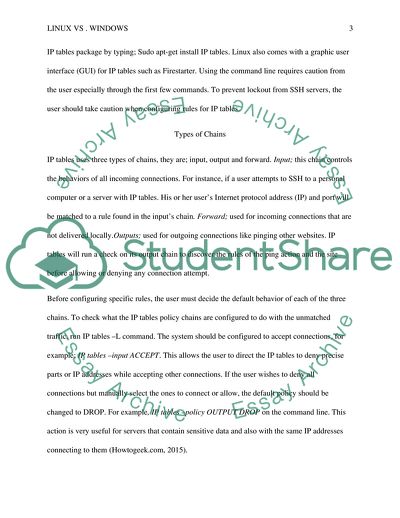Cite this document
(Inbuilt Linux and Windows Firewall Essay Example | Topics and Well Written Essays - 1250 words, n.d.)
Inbuilt Linux and Windows Firewall Essay Example | Topics and Well Written Essays - 1250 words. https://studentshare.org/information-technology/1861234-windows-vs-linux-firewalls
Inbuilt Linux and Windows Firewall Essay Example | Topics and Well Written Essays - 1250 words. https://studentshare.org/information-technology/1861234-windows-vs-linux-firewalls
(Inbuilt Linux and Windows Firewall Essay Example | Topics and Well Written Essays - 1250 Words)
Inbuilt Linux and Windows Firewall Essay Example | Topics and Well Written Essays - 1250 Words. https://studentshare.org/information-technology/1861234-windows-vs-linux-firewalls.
Inbuilt Linux and Windows Firewall Essay Example | Topics and Well Written Essays - 1250 Words. https://studentshare.org/information-technology/1861234-windows-vs-linux-firewalls.
“Inbuilt Linux and Windows Firewall Essay Example | Topics and Well Written Essays - 1250 Words”. https://studentshare.org/information-technology/1861234-windows-vs-linux-firewalls.


